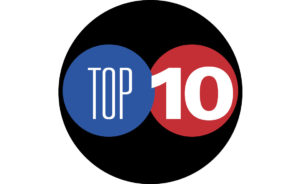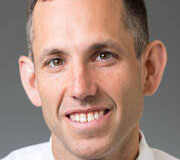 News on the Society for Vascular Surgery (SVS) ballots set to determine the next vice president and secretary, a hard-hitting column about vascular surgery’s role in treating vascular injury, and a look inside the most recent issue of Seminars in Vascular Surgery were among the most-read stories on the Vascular Specialist website during the month of May.
News on the Society for Vascular Surgery (SVS) ballots set to determine the next vice president and secretary, a hard-hitting column about vascular surgery’s role in treating vascular injury, and a look inside the most recent issue of Seminars in Vascular Surgery were among the most-read stories on the Vascular Specialist website during the month of May.
1. Voting for SVS vice president, secretary begins May 23
SVS Active and Senior members started voting May 23 for a new SVS vice president and secretary for 2022–23. Election results will be announced at the SVS Annual Business Meeting on June 18 during VAM in Boston.
2. A modest proposal: Let’s eat the trauma surgeons
Medical editor Malachi Sheahan III, MD, tackles the trauma surgeons’ reboot of a tired, ridiculous feud. “Vascular surgeons may not be the heroes the trauma surgeons want, but we are the ones they need,” he writes. “The only sane pathway forward is collaboration.”
3. War in Ukraine: A tale of unspeakable horror, unprecedented unity and unquenchable thirst for freedom
Andriy Nykonenko, MD, Maksym Karpusenko and Jean-Baptiste Ricco, MD, wrote this guest editorial in the days leading up to April 2. It was co-published with the European Journal of Vascular and Endovascular Surgery.
4. Cancer patients face greater risks from AAA repair
Elective abdominal aortic aneurysm (AAA) repair in patients with a cancer diagnosis is associated with several poor postoperative outcomes, according to a newly published study from researchers at the University of Missouri School of Medicine.
5. Collaborators not cases: Engaging patients with aortic dissections as partners in patient-centered outcomes research
The latest issue of Seminars in Vascular Surgery focuses on the work being carried out by the Aortic Dissection Collaborative. Guest editor Sherene Shalhub, MD, who founded the patient-centered organization, and the journal’s editor-in-chief, Caitlin Hicks, MD, tell Vascular Specialist about the importance of the publication—and why it represents a landmark in the field of aortic dissection treatment.
6. Supply & demand: [Private] practice matters
Vascular surgeons in private practice could play a crucial role in alleviating one of the existential problems currently vexing the specialty: The training of future generations of specialists and its intersection with declining numbers of open AAA repairs.
7. Less frequent post-EVAR surveillance might be safe in some patient groups, study suggests
Results from the multicenter, retrospective ODYSSEUS study carried out in The Netherlands suggest that less frequent surveillance after endovascular aneurysm repair (EVAR) may be warranted. However, authors Anna C. M. Geraedts, MD, of Amsterdam University Medical Centres, Amsterdam, The Netherlands, and colleagues stress that future studies are needed to determine the patient groups in which this would be safe.
8. From proposal to podium: Tips for getting your abstract accepted at academic conferences
“Striving for excellence in research is one of the defining characteristics of an academic surgeon,” writes Charles DeCarlo, MD, in our Corner Stitch column. “But simply doing great research is not enough. The dissemination of that research through academic forums, presentations and publications is just as critical because others need to share in that research, peer-review it, and, ultimately, implement your findings for the world to become a better place.”
9. SVS Foundation seeks applicants for VISTA projects
The SVS Foundation started to seek proposals in mid-April for pilot outreach projects to help identify needed vascular services in underserved portions of the U.S.
10. FDA approves expanded indications for TCAR’s Enroute stent
The Food and Drug Administration (FDA) approved expanded indications for the Enroute stent system—part of the transcarotid artery revascularization (TCAR) procedure—to include patients at standard risk for adverse events from carotid endarterectomy (CEA), Silk Road Medical announced today. Previously, the stent was approved for use only in patients with anatomic or physiological criteria that put them at high risk of complications from more invasive surgical procedures.












